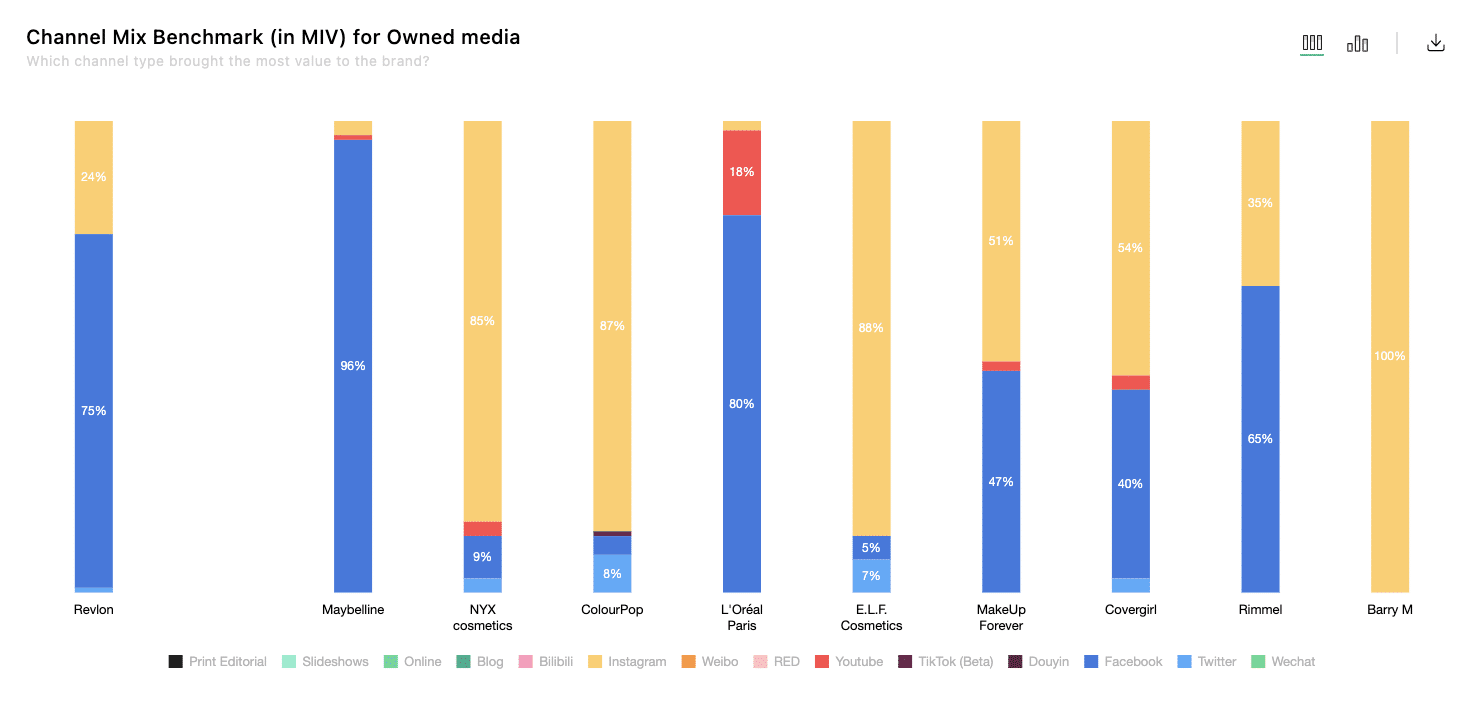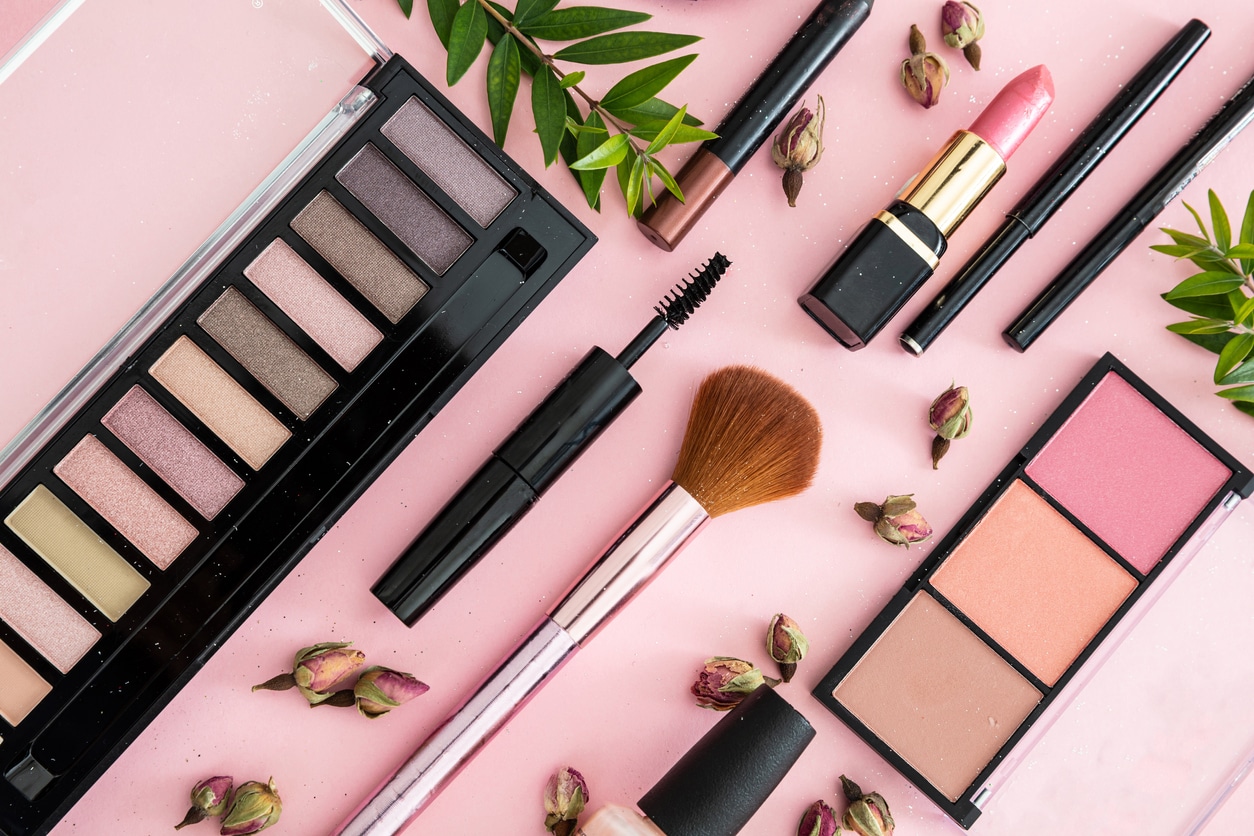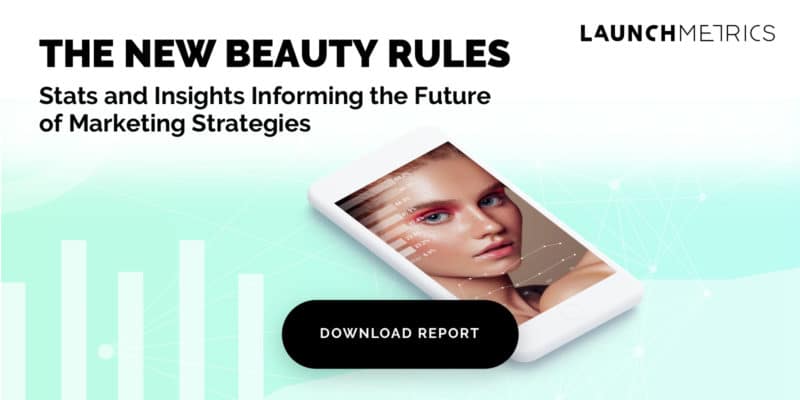Through the powers of Social Media and its constant evolution, every brand has the chance to run an impactful beauty marketing campaign. The path to great results and ROI is to thoughtfully choose the right social channels to support your strategy, depending on your messaging, goals, and target audience.
With the global beauty industry generating over $500 billion in sales per year according to McKinsey, and a global pandemic that has shifted our consumption habits to a much more digital space, there’s no excuse to not be capitalizing on Social Media’s best tools and trends to reinforce your Beauty Marketing strategy. Creating online experiences has become the number one goal for beauty brands - something that Antonia Baildam, Beauty Brand Partnerships at TikTok, stated during our Performance Summit 2020 event. But the most important thing to do before building these experiences or betting on one channel or another is to define your goals.
Whichever goals your brand may have, such as increasing brand awareness, driving traffic to your website, generating new leads, growing revenue, boosting brand engagement, or building a community around your business, there are some aspects that you must take into account when deciding what’s the best platform for your beauty marketing strategy.
So what factors do you need to consider for your beauty marketing campaign on Social Media? And how do they influence what channels you should choose?
In this article you’ll learn…
Why beauty brands need Social Media
Makeup, body creams, hair sprays, and perfumes - beauty products such as these all rely on a visual medium to be best showcased. Therefore, it's no surprise that our New Beauty Rules report that we published at the end of last year revealed that the visually-dominating platform Instagram is by far the most valuable platform for beauty companies, as 85% of professionals named this as one of their best-performing channels.
So it’s clear that Instagram will be long considered a key social platform for beauty brands - but different formats of content resonate on different channels. Activations on YouTube, for example, can drive sales and convert consumers into a community, so it’s important to deliver personalized content to targeted, niche audiences through carefully selected social platforms.
Showing off your brand's personality through social mediums also gives beauty consumers a chance to build rapport and relate to the messaging, increasing overall brand awareness.
Encouraging followers to participate in the conversation surrounding your beauty campaign is key for customer engagement. Promoting call-to-actions like sharing, commenting, and clicking-through can also increase traffic to your e-commerce site, simply put - the benefits are endless, as Social Media platforms can activate an audience and customer base.
How to start defining your Beauty Marketing strategy for Social Media
When it comes to determining which channel type can generate the most Media Impact Value™ or MIV®, beauty brands are seeing a variety of results depending on the demographic they target and strategies they use.
In the graph below showing a Channel Mix Benchmark for Owned Media, we see that in February 2021, NYX Cosmetics generated 85% of its total MIV® ($13.6M) via Instagram, a social platform known for its large advertising audience of Millennials aged 25-34 years. With a hefty following of 14.7M and plenty of young Influencers featured on their feed, it's clear that NYX is efficiently strategizing for the Instagram demographic.
In contrast, looking at L'Oréal Paris, they generated 80% of their total MIV® ($12.4M) via Facebook - a channel that has a more even spread of users across most age groups aged 18-54 years. So, unsurprisingly, L'Oréal's main ambassadors like Eva Longoria and Viola Davis aren't Millennials or Gen Z, helping to hone in on their more mature target demographic.

Launchmetrics Insights Platform
The Top 5 Social Media channels to consider for your beauty industry marketing brand strategy
Instagram is nothing short of a juggernaut, a social channel made for mobiles with a powerful visual appeal and around one billion monthly active users, most of which are Millennials. So for brands aiming to connect with a younger audience, Instagram can't be overlooked. With additional Live and Story features with swipe-up link capabilities to your e-commerce sites, it's perfect for showcasing beauty products and developing a visual brand identity that will generate awareness and leads.
The platform is very buyer-friendly, which means beauty marketing campaigners can post captivating visual content within the in-app shop to generate sales. Another key advantage to promotion on Instagram is its reputation for highly effective Influencer leveraged marketing. The commitment to invest in Influencers across the board is clear, with brands set to spend up to $15 billion on Influencer marketing by 2022.
To build trust, credibility, and relationships within the beauty community on Instagram, many brands shell out big dollars for collaborations with Influencers. Fenty Beauty by Rihanna has had one of the biggest impacts on the industry since it launched in 2017 and is known for promoting inclusivity, and not only utilizing the face of its ultra-famous founder but also a range of Mega to Micro-Influencers.
Despite an All-star Influencer supported launch campaign, it is now common practice for Fenty Beauty to regularly feature Micro-Influencers on their feed, reposting their photos sporting Fenty products. Micro-Influencers are gaining popularity within beauty marketing campaigns on Instagram, undoubtedly due to the sense of authenticity that this kind of Influencer provides to their niche following, rather than solely the voice of the brand itself. These Micro-Influencers can also count on some extra followers if they showcase Fenty Beauty products and end up on their feed.
Visa det här inlägget på Instagram
Check out our blog post to learn everything you need to know about how to sell your product on Instagram.
TIKTOK
For a Beauty Marketing campaign that can be quickly illustrated in a short format and aims to capture the attention of a mainly Gen Z audience, there is no better social platform than TikTok. The increasingly popular video-sharing app with 100 million daily active users is known for trendy dances, comedy skits, and viral moments, while its algorithm allows brands to use tools like hashtags to make a long-lasting impact in a short space of time.
The value and power of a viral TikTok video in a Beauty Marketing strategy is undeniable. That was evident in 2020, when e.l.f. Cosmetics celebrated for a second time one of their TikTok challenges going viral, generating more than 1 billion views. The brand's first #eyeslipsface challenge set the record for the most viral campaign in TikTok U.S history, and the second, branded #elfMagicAct, had users showcasing the brand’s Poreless Putty Primer, making it shoot to the top spot for Primer sales in the U.S.
In February 2021, Mikayla Nogueira generated 131K of Media Impact Value™ for e.l.f. Cosmetics in a single TikTok post that garnered more than 270,000 likes.
With results like these, many beauty and personal care brands that cater to a young audience could be capitalizing on TikTok's connection to those consumers by increasing brand awareness and boosting brand engagement in a fun way that doesn’t feel like traditional advertising for the consumers.
YOUTUBE
The competition among Beauty Marketing campaigns can be fierce within such a crowded marketplace. YouTube has over 2 billion monthly logged-in users and is the second most popular website in the world according to Alexa.
For beauty brands that want to build Thought leadership as a means to convert loyal followers into leads and sales, then YouTube has a lot to offer. The video platform is a particular favorite in the beauty community, allowing brands and Influencers to go in-depth on product reviews and tutorials.
To cut through the noise and get noticed, many brands look to YouTube to truly showcase their product in action - something a static image, billboard, or even a 30-second video ad simply can't do. But keep in mind that the platform is heavily creative, so a dedicated video team to maintain the flow of educational and useful content is vital.
We can't look to YouTube without mentioning one of the platform's biggest beauty vloggers, Jeffrey Star, who is the tenth highest-Paid YouTuber, boasting 16.5 million subscribers and nearly 2.5 billion views. Star has built a cult-like following on his channel, with brands vying to get featured and reviewed on his video series: "...Is it Jeffrey Star Approved?".
Star posted to Twitter to announce he would review the e.l.f cosmetics #mintmelt collection, this advisory post alone generated 26K Media Impact Value™, ahead of the 1.6 million views and 66K likes in just two days he would garner for the YouTube review below.
For starting new beauty lines, viral product launches, and generating awareness for your beauty brand, using both own brand-generated as well as leveraging Influencer collaborated YouTube videos can boost a Beauty Marketing campaign to reach both hyper-targeted as well as mass loyal audiences of beauty subscribers.
According to Vogue Business, despite plenty of Social Media buzz around Instagram and TikTok, "for word-of-mouth marketing, Facebook groups are proving a potent tool for beauty brands."
If your brand objective is to build a community around your business with the wide net of age groups on offer, then Facebook is a fantastic place to keep your ear to the ground, practise social listening, and strike at the right moment with helpful info and cool products to generate new leads. More than one billion people are active members of Facebook groups, but most members don't seek out groups on their own - friends send invites or Facebook suggests them.
On the biggest social platform in the world, with 2.7 billion users evenly spread across most age groups 18-54 years, many beauty brands have attracted tens of thousands of members in their groups, creating space for unfiltered, honest, and therefore a highly valuable feedback source. In the environment of a Facebook group, customers who are invested in a brand or beauty in general, have decided to join and participate, posting their thoughts, reviews, and criticisms for other like-minded people.
It isn't often that marketers get the chance to freely observe these interactions and then participate themselves. The resulting information gathered can be crucial to determining the next step of your Beauty Marketing campaign and product development.
For beauty brands that seek to increase consumer participation, clicks, likes, and garner customer information, then Twitter as a social platform is particularly useful. Starting conversations, engaging followers, and making a #trendingtopic for a Beauty Marketing campaign is very possible - no matter how big or small a brand's following may be.
The platform is popular for its short updates, high follower engagement, re-tweets, link-sharing, polls, and #hashtags. However, this means that for brands who aren't as focused on building a strong brand voice and instead rely primarily on visuals, Twitter may not be the top option.
Important conversation topics swirling around the #TwitterBeauty sphere allows anyone to chime in, and many of its majority Millennial user base like to get involved. Twitter's 2020 Beauty Report states that users or brands "do not need to have massive reach to get in on the conversation or make an impact," and revealed that "94% of the #BeautyTwitter community is made up of beauty fans."
Brands that have a special message to share can also utilize Twitter's reputation for being a conversation hub on polarizing topics among its 187 million daily active users. LGBTQ+ Influencers often take to Twitter to celebrate authenticity and affect change, in addition to marking pop culture moments. Many Black beauty Influencers are leading the conversation around skincare on Twitter, as well as haircare with the #NaturalHair discussion, which embraces loving your hair in its natural state.
Beauty marketers can join in and promote conversations on relevant influential topics, as well as start their own, in just 280 characters. The most engaged with beauty brand on Twitter is ColourPop Cosmetics, which often highlights conversations around trending social topics that align with their campaigns messaging, such as inclusivity and body positivity.
ALL BODIES ARE GOOD BODIES 💜 https://t.co/OjUdVynp8I
— ColourPop Cosmetics (@ColourPopCo) July 17, 2019
The challenge beauty brands like ColourPop Cosmetics will continue to face is how to bridge a connection with consumers and maintain their online space for one-on-one conversations with the masses. The advancement of Social Media and ever-increasing participation from users mean that from Instagram to YouTube and all in between, social channels are where beauty brands can go to connect with their loyal followers and be seen by new ones.
Compared to traditional advertising, Social Media channels like those mentioned above give beauty marketers an incomparable platform for promoting specialized content which is designed to be noticed, engaged with, and later measured for maximum results.
Download our report The New Beauty Rules for more stats and insights informing the future of Beauty Marketing Strategies.

